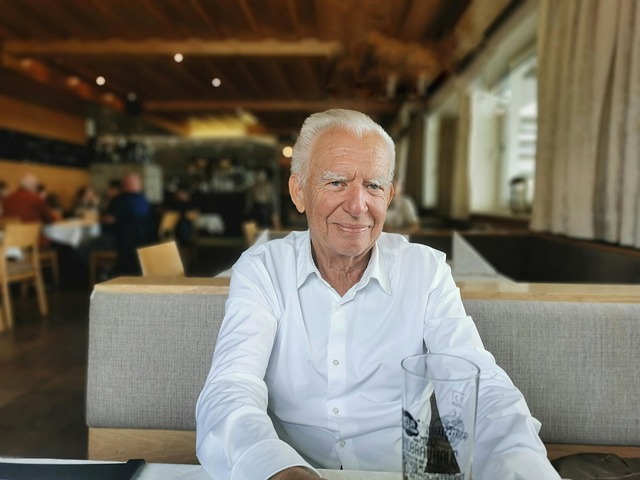Funeral Homes Near Diamond Creek: A Comprehensive Overview
Introduction
Welcome to an extensive exploration of a subject that touches upon life’s most sensitive and significant moments—Funeral Homes Near Diamond Creek. This article aims to guide readers through the intricate world of end-of-life services, focusing on the specific region near Diamond Creek. We will delve into the various facets, from understanding the concept and its historical roots to global influences, economic implications, technological innovations, and policy frameworks. Additionally, we’ll examine real-world challenges, provide case studies, and offer insights into the future of this essential industry.
Understanding Funeral Homes Near Diamond Creek
Definition:
Funeral homes near Diamond Creek refer to establishments specializing in providing funeral and burial services for individuals and families within a specific geographical area surrounding Diamond Creek. These homes cater to the emotional and logistical needs of grieving families during their time of loss.
Core Components:
- Funeral Planning: Assisting families in organizing funerals, including arranging ceremonies, obtaining licenses, and selecting caskets, urns, and burial sites.
- Embalming and Preservation: Skilled professionals preserve the remains using embalming techniques to prolong their state for viewing.
- Cremation Services: Offer alternatives to traditional burials by reducing bodies to ashes through high-temperature cremation.
- Burial and Cemetery Arrangements: Facilitate burial plots, headstones, and maintenance of cemeteries, ensuring dignified final rest for the deceased.
- Supportive Services: Provide grief counseling, pre-planning options, and assistance with funeral insurance claims.
Historical Context:
The concept of funeral homes has evolved over centuries, reflecting societal changes in death rituals and family dynamics. In ancient times, communities often handled burials, while religious institutions played a significant role in funeral practices. With the rise of modern urban centers, specialized funeral directors emerged in the 19th century to cater to the growing need for professional services. Today, funeral homes near Diamond Creek are integral to supporting families during one of life’s most challenging periods.
Significance:
These facilities serve as sanctuaries where families can grieve, remember, and celebrate the lives of their loved ones. They provide a range of services that streamline the often complex process of arranging funerals, allowing families to focus on their emotional well-being. Moreover, they contribute to the broader community by ensuring respectful and dignified end-of-life care, fostering social cohesion during times of mourning.
Global Impact and Trends
International Influence:
Funeral homes near Diamond Creek are not limited to any specific region; their services are sought worldwide. Internationally, funeral practices vary greatly, influenced by cultural, religious, and traditional factors. For instance, countries like India have vibrant, colorful funeral traditions, while Japan emphasizes respect and simplicity. Funeral homes must adapt to these diverse customs to provide culturally sensitive care.
Global Trends:
- Green Funerals: There is a growing trend towards eco-friendly burials and cremations, with an emphasis on sustainable practices and natural settings.
- Personalized Services: Families increasingly seek customized funeral arrangements, reflecting the deceased’s unique personality and interests.
- Digital Memorials: The digital revolution has led to virtual funerals and interactive online memorials, allowing loved ones to participate remotely.
- Cultural Integration: Funeral homes are incorporating diverse cultural practices into their services to cater to a globalized population.
Regional Differences:
In North America and Europe, funeral homes have traditionally offered a wide range of services, while some Asian countries have more community-oriented approaches, with family members often taking on certain responsibilities. The popularity of cremation varies across regions, influenced by cultural norms and religious beliefs. For instance, cremation is more prevalent in Scandinavia and parts of the United States, while traditional burials remain preferred in many Latin American cultures.
Economic Considerations
Market Dynamics:
The funeral services industry operates as a niche market, with funeral homes near Diamond Creek forming a vital component. The demand for these services is influenced by factors such as population demographics, life expectancy rates, and cultural practices. According to a recent study, the global funeral services market size was valued at USD 153.6 billion in 2021 and is projected to grow at a CAGR of 7.8% from 2022 to 2030 (MarketWatch, 2022).
Investment Patterns:
Funeral homes often require significant initial investments for facilities, equipment, and staff training. Many businesses operate as family-owned establishments, passed down through generations, while others are part of larger corporate chains. Investment strategies focus on maintaining high standards of service, staying current with technology, and adapting to changing consumer preferences.
Economic Impact:
These establishments contribute substantially to local economies, generating employment opportunities and supporting related industries like florists, funeral supply stores, and cemetery maintenance services. They also play a role in tourism, as visitors often seek out meaningful experiences during trips, including visits to cemeteries and memorial sites.
Technological Advancements
Digital Transformation:
Technology has revolutionized the way funeral homes near Diamond Creek operate, enhancing efficiency and offering new services:
- Online Planning Platforms: Families can now create digital tributes, share memories, and plan funerals remotely through interactive websites and apps.
- Virtual Reality (VR) Services: Some homes provide VR experiences for families to virtually visit cemeteries or participate in funeral ceremonies from anywhere in the world.
- Social Media Integration: Memorial pages on social media platforms allow friends and family to leave condolences and share memories, keeping the deceased’s legacy alive.
Emerging Technologies:
- 3D Printing: This technology can create personalized 3D models of the deceased for families to keep as mementos.
- AI-Assisted Planning: Artificial intelligence (AI) can provide personalized recommendations for funeral arrangements based on cultural and personal preferences.
- Biotechnology: Advances in biotechnology offer innovative preservation methods, such as bio-conservation, which uses natural processes to preserve remains.
Impact and Future Potential:
Technological advancements have improved the overall customer experience, making funeral planning more accessible and personalized. As technology continues to evolve, funeral homes can expect increased demand for digital services, virtual participation, and innovative memorial options. Embracing these changes will be crucial for staying competitive in the industry.
Policy and Regulation
Key Policies:
- Licensing and Registration: Funeral homes must obtain licenses from local authorities, ensuring they meet specific standards for facilities, staff qualifications, and safety protocols.
- Cremation Regulations: Many regions have strict regulations governing cremation processes, including emissions control and the proper disposal of remains.
- Burial Practices: Policies dictate acceptable burial practices, including cemetery zoning, headstone placement, and maintenance requirements.
Legislative Frameworks:
Internationally, organizations like the International Association of Funeral Directors (IAFD) promote ethical standards and best practices. Individual countries have their own regulatory bodies, such as the Department of Health in the United States, which oversees funeral service regulations. These frameworks ensure consumer protection, maintain industry standards, and address concerns related to health, safety, and environmental impact.
Influence on Development:
Compliance with policies and regulations is mandatory for funeral homes to operate legally and ethically. These guidelines shape the industry’s practices, influencing business models, pricing structures, and customer interactions. Adapting to changing legislation is essential for funeral homes to stay compliant and maintain their reputation.
Challenges and Criticisms
Main Issues:
- High Costs: Funeral services can be expensive, often deterring families from seeking professional help. This issue has led to concerns about accessibility and equitable care.
- Lack of Transparency: The industry has faced criticism for lacking transparency in pricing and service offerings, making it challenging for consumers to compare options.
- Cultural Sensitivity: Providing culturally sensitive services, especially in diverse communities, can be challenging, requiring funeral homes to stay informed and adaptable.
Proposed Solutions:
- Government Regulation: Implementing clearer pricing guidelines and mandatory transparency policies can protect consumers and foster fair competition.
- Community Outreach: Funeral homes can partner with community organizations to offer educational resources and financial assistance programs, making services more accessible.
- Cultural Training: Investing in cultural sensitivity training for staff ensures they can cater to a wide range of diverse needs with compassion and expertise.
Case Studies
Case Study 1: Green Cemetery Innovation
In the United Kingdom, the Woodland Burial Park movement has gained traction, offering eco-friendly burial options in natural settings. Funeral homes near Diamond Creek have embraced this trend by partnering with local cemeteries to provide sustainable burial packages, including biodegradable coffins and native tree planting. This collaboration has resulted in increased customer satisfaction and a more environmentally conscious approach to end-of-life services.
Case Study 2: Digital Memorials for Remote Families
A small funeral home in Australia implemented a digital memorial platform, allowing families to create interactive online tributes for their loved ones. This innovation enabled remote relatives to participate in the mourning process, sharing stories and memories from anywhere globally. The success of this initiative led to increased adoption of virtual services within the industry.
Case Study 3: Community-Focused Funeral Planning
In a multicultural city like Toronto, Canada, some funeral homes have tailored their services to accommodate diverse cultural practices. They offer specialized packages for various ethnic groups, ensuring respectful and meaningful ceremonies. This approach has fostered strong community relationships and positioned these homes as leaders in culturally sensitive end-of-life care.
Future Prospects
Growth Areas:
- Specialized Services: Niche services catering to specific demographics, such as veterans’ funerals or cultural-specific arrangements, are expected to grow.
- Personalized Memorials: Customized memorials and memorialization products will continue to gain popularity, allowing families to create unique tributes for their loved ones.
- Digital Integration: The integration of augmented reality (AR) and extended reality (XR) technologies could offer immersive experiences for virtual funerals and memorial sites.
Emerging Trends:
- Sustainable Practices: Eco-friendly burials and cremations will remain a significant trend, driving innovation in natural burial grounds and sustainable funeral products.
- Personalized Cremation Options: Customers may seek unique ways to disperse or preserve cremated remains, such as jewelry encasements or space burial services.
- Online Community Support: Virtual support groups and online counseling platforms dedicated to grief management will likely expand to meet the growing need for digital bereavement services.
Strategic Considerations:
- Funeral homes should invest in technology training for staff to ensure they can effectively utilize digital tools and keep up with industry innovations.
- Building strong community relationships through educational workshops, cultural events, and partnerships will enhance a funeral home’s reputation and accessibility.
- Staying adaptable and responsive to changing consumer preferences will be crucial for long-term success.
Conclusion
Funeral homes near Diamond Creek are integral to the tapestry of end-of-life care, providing essential services that support families during their most vulnerable moments. From understanding cultural nuances to embracing technological advancements, this industry continues to evolve while maintaining its core purpose. By navigating challenges, adopting innovative practices, and staying aligned with global trends, funeral homes can ensure they remain a vital resource for communities worldwide.
FAQ Section
Q: Are there affordable funeral options available?
A: Yes, many funeral homes offer various pricing packages to accommodate different budgets. Financial assistance programs and community resources can also help make funeral services more accessible.
Q: How do I choose the right funeral home?
A: Consider factors like location, availability of services, cost, cultural sensitivity, and online reviews. Meeting with several homes to discuss your needs and preferences is advisable.
Q: Can I plan a funeral ahead of time?
A: Absolutely! Pre-planning allows for peace of mind and ensures your wishes are respected. Many funeral homes offer pre-planning consultations and customizable packages.
Q: What if I want a unique way to memorialize my loved one?
A: Funeral homes can accommodate various requests, from personalized urns to unique burial rituals. They work closely with families to create meaningful tributes that reflect the deceased’s life.
Q: How does technology enhance funeral services?
A: Technology offers online planning tools, virtual participation options, and interactive memorial platforms, making funeral arrangements more accessible and personalized.
Choosing a funeral home near Diamond Creek, Victoria, Australia, offers multiple top-rated options catering to diverse needs, from traditional funerals to cremations and custom ceremonies. Located at 49-55 Main St, local funeral homes like Tobin…….
Tobin Brothers Funerals Diamond Creek offers compassionate, personalized funeral services with a long history of serving their community. They provide a full range of options, from traditional burials and cremations to cultural-specific ceremoni…….
Choosing the right funeral home near Diamond Creek is essential for a dignified and personalized grieving process. With diverse cultural sensitivity, budget-friendly options, and expert support, these homes offer comfort during life's most…….
The funeral home at 49-55 Main St, Diamond Creek VIC 3089, Australia, offers easy accessibility and compassionate services for all visitors, including those with disabilities. With dedicated staff, convenient parking, and adapted facilities like…….
Tobin Brothers Funerals Diamond Creek is a trusted and compassionate funeral service provider, offering personalized care and support during difficult times. Located at 49-55 Main St, Diamond Creek VIC 3089, Australia, they prioritize individual…….
Tobin Brothers Funerals at 49-55 Main St, Diamond Creek, VIC 3089, Australia is a compassionate and professional funeral home offering personalized services for diverse cultural traditions. With accessible location and contact via +61 3 8468 170…….
Diamond Creek Funeral Homes at 49-55 Main St, Diamond Creek VIC 3089, Australia, offers accessible and convenient services for families. Strategically located in the community, it provides easy access for visitors with physical disabilities, hea…….
Diamond Creek, Victoria, hosts Tobin Brothers Funerals at 49-55 Main St, offering compassionate funeral services tailored to local and surrounding communities. With quick response times and personalized support, this establishment provides comfo…….







